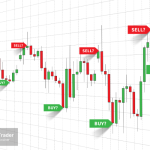[ɑːsk praɪs]
Ask refers to the lowest price at which a seller is willing to sell a particular asset, such as a stock, commodity, or currency
What is Ask Price (AP)?
AP is the price at which a seller is willing to sell a particular asset, such as a stock, commodity, or currency. It represents the minimum price that a buyer must pay to acquire the asset.
When a trader wants to buy an asset, they will typically look at the AP to determine the minimum price they will need to pay to acquire that asset. If a trader wants to sell an asset, they will typically look at the Bid price, which is the highest price at which a buyer is willing to purchase the asset.
The difference between the AP and the Bid price is known as the “Bid-Ask spread.” This spread represents the transaction cost of trading the asset and is typically used by brokers and market makers to make a profit on each trade. The Bid-Ask spread can vary depending on the liquidity and volatility of the asset being traded, as well as other market conditions.
Key Takeaways
- The Ask is the price at which a seller is willing to sell a particular asset, such as a stock, commodity, or currency.
- The AP is the minimum price that a buyer must pay to acquire the asset.
- The Bid-Ask spread is the difference between the AP and the Bid price, and it represents the transaction cost of trading the asset.
- The AP is an important factor to consider when buying or selling an asset, as it can impact the profitability of a trade.
Example
You're interested in buying a share of XYZ company's stock. You check the current market price and see that the Bid price is $50.00 and the AP is $50.10.
This means that if you want to buy the stock, the minimum price you would have to pay is $50.10 per share. If you decide to place a buy order for the stock at the current AP of $50.10, your order will be executed immediately and you will purchase the stock at that price.
On the other hand, if you decide to place a buy order at a lower price, such as $50.00, your order may not be filled immediately if there are no sellers willing to sell the stock at that price. In this case, you may have to wait until a seller is willing to sell the stock at a lower price or you may have to adjust your buy order to a higher price to match the current AP.
Back to Glossary.






